Tag: penny stocks
Should You Pay A Subscription for Good Penny Stocks?
Let’s face it, there are vultures in every industry – including good penny stocks. You see it a lot in the diet and health industry, companies promoting fads, in hopes you take the bait and bite. You might catch an infomercial on the weekends on that can’t-miss money making opportunity. When it comes to investing and trading, there  are hoards of individuals pitching you indicators, strategies, and alerts.
are hoards of individuals pitching you indicators, strategies, and alerts.
Does it ever make sense to sign up and pay for a subscription service pertaining to good penny stocks?
Before I share my opinion, let’s think about it for a second. The more competition, the more efficient the market is and the lower the profit margin. For example, let’s say you are at the supermarket and you’re interested in buying a package of hot dogs. You sift through the aisle and see that there are a number of different brands offering hot dogs. You’ll also notice that prices are relatively comparable. The reason being competition.
Now, imagine that you’re at Yankee Stadium and you’re hungry for a hot dog. You go to the vendor and notice that the price of a hot dog is the same price for 15 hot dogs at the grocery store.
Sounds crazy right?
Well, Yankee Stadium has no competition, you either buy their hot dog, or you don’t buy a hot dog at all. They have no competition, and therefore, they can set prices however they want. With that said, they have a very high profit margin.
Now, imagine that there is a trading strategy for good penny stocks that does very well in the market, meaning that it yields a good profit and has a high probability of  being successful. As more traders pick up on this, competition rises and profits become smaller and smaller. To compensate, traders will have to lever up just to get the same type of returns they were getting before. Eventually there will be too many traders in and the strategy has minimal effectiveness.
being successful. As more traders pick up on this, competition rises and profits become smaller and smaller. To compensate, traders will have to lever up just to get the same type of returns they were getting before. Eventually there will be too many traders in and the strategy has minimal effectiveness.
With that said, I’d be very cautious on anyone selling special indicators or signals. On the other hand, trading rooms, research, and even stock picking services can still be useful.
At the end of the day, there is only so much you can keep your eyes on, in respect to the market. The more qualified eyes, the better. You can learn a lot from good traders, as well as bad trader. Working on idea generation is one of the most important activities as a trader. You see, after a while, some strategies simply stop working, if you don’t work on ideas you’ll eventually be irrelevant. That’s why you’ll hear a lot of traders from the 1990s and 2000s struggle today, they never made the proper changes and are now obsolete – completely out of good penny stocks.
All in all, idea generation services are worth it, even if they are really bad in their picks. Because if they are awful, you can take the other side of their trades and be profitable. On the other hand, services that offer you how to trade or sell you a signal or strategy, the more users they get, the less effective they’ll eventually be.
Most professional traders trade in teams. They share their ideas with a select group of other traders they trust. Just make sure if you do decide to pay for a service, it’s something that fits your budget. Most services offer trials so make sure to test a bunch out before deciding what fits your trading style the most when trading good penny stocks.
Use Volatility To Trade Top Penny Stocks
They say volatility creates opportunities in trading top penny stocks. For those not familiar, volatility is something that is attempted to be measured, the most generally accepted method of measurement is the standard deviation. The standard deviation is expressed in annualized % terms, and tell us how much prices deviate from the mean.
In other words, standard deviation is a statistic that measures the amount of 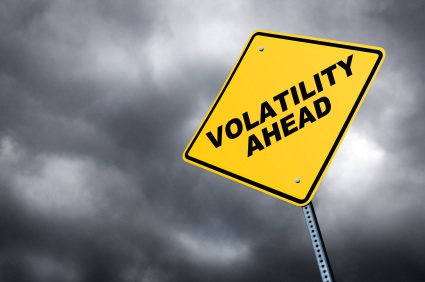 variability around the mean.
variability around the mean.
Let’s say the price of a stock is trading at $10, and has a historical volatility of 30%. As mentioned earlier, standard deviation is measured in annualized terms. We would take the stock price and multiply it by 0.30, which gives us the number 3.
A one standard deviation move encompasses about 68% of the normal distribution. In this example it means that there will be a 68% chance that the stock price will be within $7 to $13 on the year. On the other hand when trading top penny stocks, to get a two standard deviation, we simply multiply our first figure by two. In this example it’s 6.
According to our historical volatility, there is a 95% chance the stock price will be trading within $4 and $16 on the year.
Now, we mentioned that historical volatility is expressed in annualized terms. However, you can convert that into a daily volatility if you wished when trading top  penny stocks. In order to translate the annualized volatility, take the number of trading days in the year and square root them. Generally there are around 252 trading days in the year, when you square root that, you get 15.87.
penny stocks. In order to translate the annualized volatility, take the number of trading days in the year and square root them. Generally there are around 252 trading days in the year, when you square root that, you get 15.87.
So, if we have an annualized volatility of 30% we take that number and divide it by 15.87. In return, we get a number of 1.89%. That means on average we can expect it move within a +/- 1.89% on any given day.
In general, volatility is mean reverting. Periods of high volatility are usually followed by periods of lower volatility, and vice versa. Traders can use this information to size their top penny stocks trades better.
For example, let’s assume volatility has expanded. If you’re aware of that, you might want to trade smaller to compensate for the wilder swings. In addition, under higher volatility, you can make or lose with less shares because the price swings are greater.
In most cases, volatility expands when stocks experience downward pressure. The move towards the downside is usually quicker, when compared to when stock prices  rise. When stock prices rise, they tend to grind up.
rise. When stock prices rise, they tend to grind up.
With that said, you can use volatility to gauge fear and greed in the market when trading top penny stocks. The most commonly used metric for the overall market is VIX. The VIX more or less tells us about the volatility in the S&P 500 index. A low VIX means there is little fear in the market, a higher VIX means there is fear.
In summary, knowing the volatility of a stock can help in your position sizing. You might be able to use those numbers to gauge sentiment in the stock as well. For a bigger picture perspective, the VIX can be used to measure gauge fear and greed in the overall market when trading top penny stocks.
How To Profit From The Sympathy Play When Trading Blue Chip Stocks
On November 9th, 2016, it was announced that Donald Trump would be the 45th President of the United States In America. When the markets opened that day we started to see money flow from certain sectors into others. Intuitively, this makes sense, a new regime and potentially new policies will be enforced. Some industries will thrive, while others might suffer with blue chip stocks.
One sector that was resurrected, where the shippers of dry bulk cargo. For example, DryShips, Inc. finished that week up more than 195%.
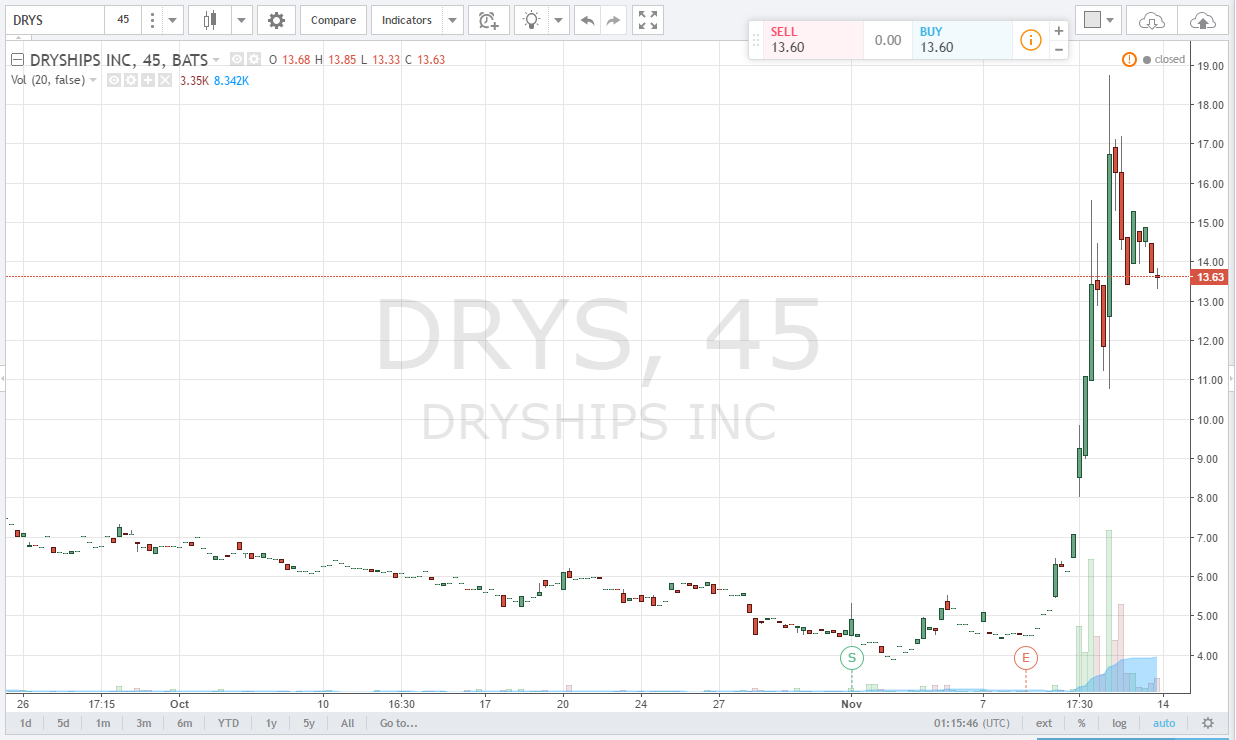
(source: TradingView.com)
The stock price spiked from about $5 to as high as about $19 a share in a couple days. According to YAHOO! Finance, more than 25% of the shares were short, creating a short squeeze in the blue chip stock.
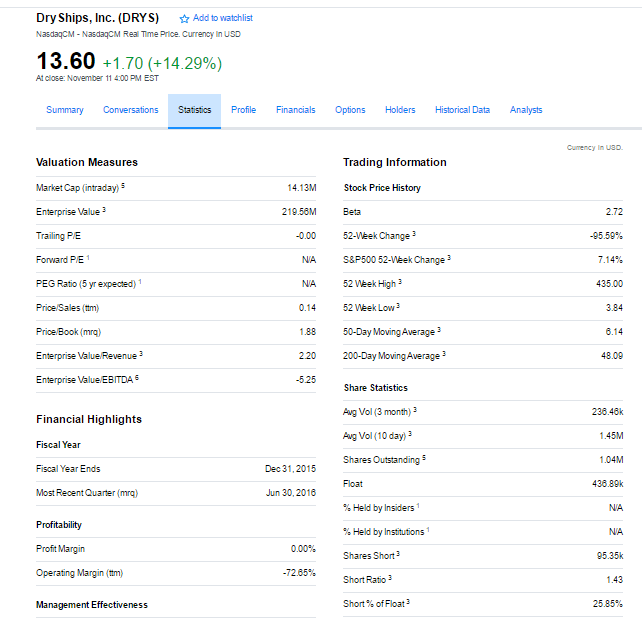
(source: YAHOO Finance!)
We had a catalyst, coupled with some fundamental facts about the stock. Specifically, there was a small float, about a million shares outstanding, and a high short interest, that helped drive the stock price higher.
Generally, when you have such a dramatic move in a stock, traders will look for comparable companies to piggyback off of.
In this example, Eagle Bulk Shipping Inc. (EGLE) shared some similar characteristics. It was trading under $10 per share, and in the same sector. With that said, some traders may feel they missed the move in DryShips, and look to pile into the next best thing. That week, Eagle Bulking Shipping closed more than 42% higher.
This strategy of piling into similar companies to ride the momentum of the hot blue chip stocks is called the sympathy play.
How can you use the sympathy play to profit?
Well, the first example is based on one stock really generating a lot of momentum and just finding something in the same space. But it doesn’t have to always be off an extreme move.
For example, let’s say Company A had earnings, but Company B has yet to report. One could wait for the EPS of Company A, and trade Company B off their results. If the EPS is positive, you take Company B for a long, if it’s negative, you take Company B for a short.
Another example, let’s say a very well known hedge fund is doing very poorly this year, and there are rumors that he might be facing redemptions or closing down the fund soon. Traders might start attacking his positions, even if there isn’t any news in those blue chip stocks.
On the other hand, let’s say a well known hedge fund manager is on a hot streak, traders might start buying stocks that they have on, hoping that they would appreciate in value.
Generally, you should be careful when relationships are loose, but volatility does create opportunities in the market.
The key is to be aware of companies, the sectors they are in, who their competitors are and see if you can take advantage of the sympathy play. As you’ve seen, there are a number of different ways that this strategy can be employed. These were just a couple of examples for you to get acclimated with the strategy regarding blue chip stocks.
How To Profit From The Short Squeeze Trading Stocks
On November 8th, 2016, The US Presidential Elections were held. Early the next day, it was announced that Donald Trump was the winner. The following day, we saw a number of sectors trade significantly higher (and some lower), based on what investors trading stocks thought it would benefit/suffer under the new President-elect.
Clearly, an event of this magnitude is not a one-off. A shift in policy changes will have a longer term effect on certain stocks. With that said, some sectors that shined that following day were in the infrastructure, pharmaceutical, and banking space. It was believed that the President-elect would cause an inflationary effect to the markets.
One company that was believed to have benefited from this regime change was Top Ships Incorporated (TOPS), it closed the week up more than 30%, largely off the election results. However, the stock had some other interesting information pertaining to it. A large percentage of the shares were sold short and still not covered by those trading stocks.
In other words, investors borrowed shares from their broker to sell, in hopes that prices drop so they could buy them at a lower price and cover. In this case, we had a situation where the stock reacted to positive news, in addition; traders, who were short the stock, were causing more pressure because they were buying shares to cover their short.
These two factors can cause a stock price to rise dramatically.
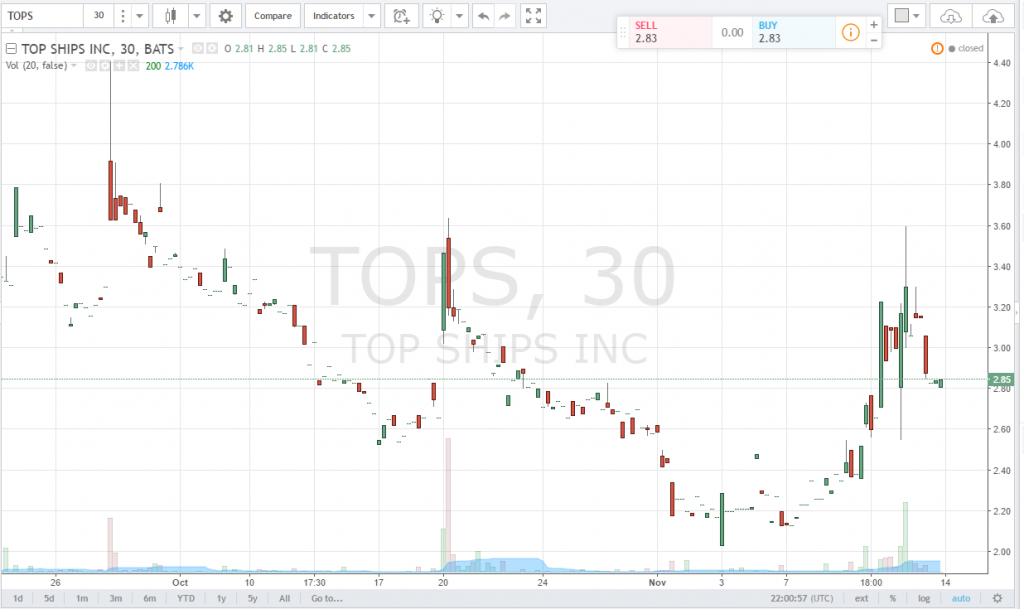
(chart: www.TradingView.com)
In this example, the stock price went from about two bucks to as high as $3.50 in just a matter of days.
If you’re a trader trading stocks, how can you use this information?
Well, let’s you traded mean reversion, and saw that the price of a stock normally trades in a $.50 range, and today for whatever reason it’s up $4. Without any other consideration, you decide to short and it ends up not working in your favor. Now, if you looked at the short interest of the stock, and noticed that it was relatively high, maybe you would have laid off on the short idea.
On the other hand, if you’re taking a long position, it might make more sense to size these trades smaller and play for a larger than normal move. A short interest stock combined with a positive catalyst can really send the stock price flying. Just being aware and be help in and of itself.
Is this information readily available when trading stocks?
The answer is yes, and for the most part, you can find a lot of it for free.
For example, if you hop on over to finviz.com, you can find important information like shares outstanding, shares float, and short float %.
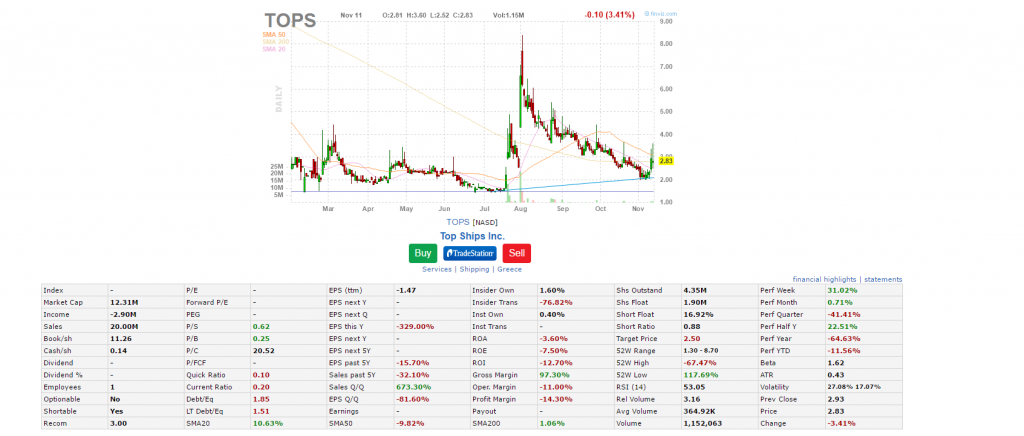
(source: finviz.com)
In this case, Top Ships had a short float ratio of 16.92%. However, it’s best to use more than one source. For example:
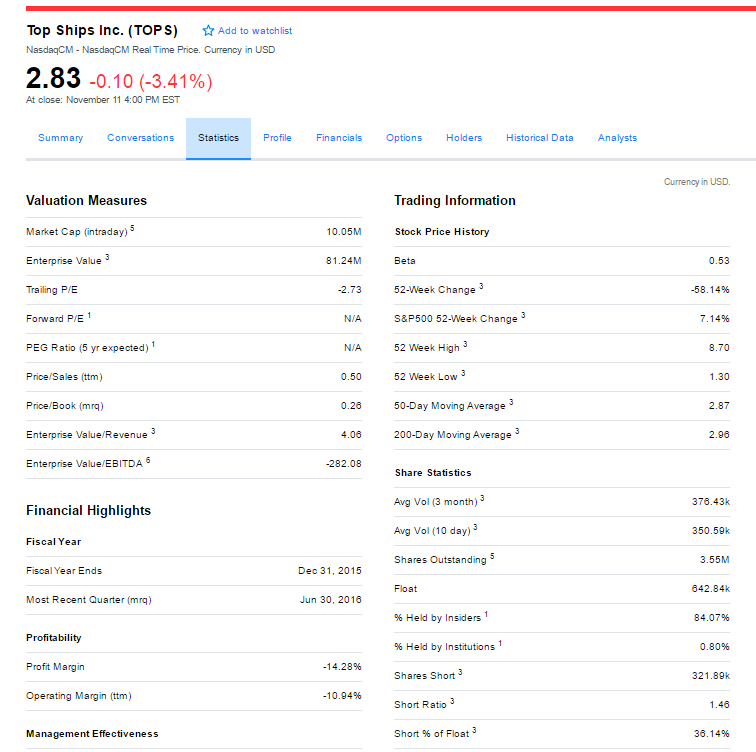
According to YAHOO! Finance, the short interest % on this company is 36.14%.
In a situation like this, where the two sources have a wide margin, check out another source.
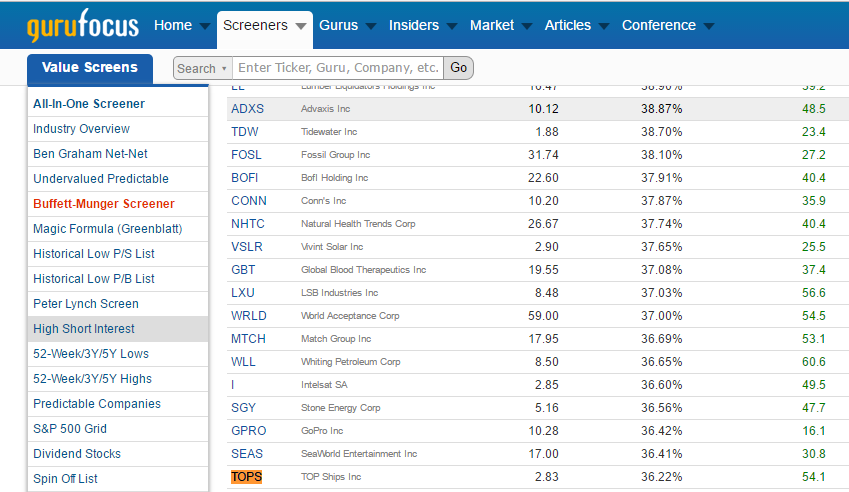
(source: gurufocus.com)
Being aware of a potential short squeeze can make you a lot of money or even save you a lot of money. The key is to be ready and prepared when trading stocks.
Top Penny Stocks Only Work If Traders Journal Their Trades
Now, there are just over 250 trading days in the year. Let’s say you’re an active trader and traded on average 3 top penny stocks per day. That adds up to 750 individual trades. Unless you have a photographic memory, you’ll probably only remember a handful of these trades, maybe your big winners or losers, or some interesting story that is tied into the trade. However, there is no way you’re going to remember all of them.
The time you spend in front of your screens can either be valuable or a waste, it’s really up to you. A valuable way to spend your time is by reviewing. It’s more or less  the same thing professional sports teams do when they study video footage of their opponents or previous game(s). They are examining to see if there is anything useful that they can find for their next encounter with the top penny stocks.
the same thing professional sports teams do when they study video footage of their opponents or previous game(s). They are examining to see if there is anything useful that they can find for their next encounter with the top penny stocks.
You can do the same thing by keeping a journal. Now, you don’t have to actually sit down and write in a notebook, if writing on your computer is easier, that works as well. The key is start recording information about your trades, thought process and tendencies.
If you’re unsure about what to journal here is some help:
Trade information: the time when the trades were made, whether you bought or sold, number of shares, holding period, and profit/loss.
Trade Thesis: In this section you would write about why you got into the trade and explain your edge in the trade.
For example, let’s say the stock price of a company was up 10% on a rumor that it might seek to put the company for sale. However, an hour later a company spokesperson comes out and denies the rumor. Some traders might start shorting 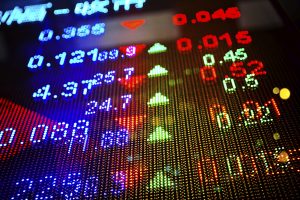 the stock off that headline. Their thesis is that the stock price rose on a belief that turned out to be false and because of that the stock should sell off.
the stock off that headline. Their thesis is that the stock price rose on a belief that turned out to be false and because of that the stock should sell off.
Well Being: In this part you want to write down about how you felt going into the trading day. For example, did you feel tired/refreshed, were you distracted/focused, did you start your day early/late/on time. Those are just some things worth considering. Some traders trade very poorly if they are hungover, while others don’t trade well without their coffee and breakfast. Find out what works for you and what doesn’t, and focus on winning with the top penny stocks.
Execution: Before every trade you should have your risk/reward mapped out. For example, I’m going to get in at this price and out here if i am wrong.
Once you know what your execution strategy is, then compare it to how you actually traded your plan. For example, let’s say you wanted to exit your long if the stock price dropped to $10, but for whatever reason you got out at $10.05.
Why?
It’s worth trying to answer why you were able or unable to follow through on the trading plan.
There is a lot more that you can include in your journal, these were just some ideas for you. The most important thing to do is journal, study and strive to improve trading the top penny stocks.
How Much Do Need To Get Started In The Stock Market?

Imagine you wanted to learn how to play the piano, and were in the market to purchase one. Now, if you’re not familiar with how much they cost, the range is anywhere between a couple thousand dollars to upwards of several hundreds of thousand dollars.
Do you think if you got a really expensive one, it would help you play better?
Heck no. Unless you’re rich, it makes zero sense to go out and fork over a lot of dough for something like this. The reason being, you are just starting out, you don’t even know if you’ll stick to it, and most likely you’re just playing for yourself, not like you need something fancy because you’ll be recording or performing for large audiences.
In business, they teach entrepreneurs to keep expenses lean and show proof of concept before expanding an operation. You don’t want to get involved with long-term leases or anything else that will put you under capital restraints. Again, you don’t know if the business will thrive, no reason to add pressure early on.
To most people, this makes a lot of sense. However, when you transfer this concept into penny stock trading, some don’t get it. You see, for whatever reason, some people think like you need to have a lot of money to get started in the stock market. That’s simply not true. And it is certainly not true when it comes to good stocks to invest in.
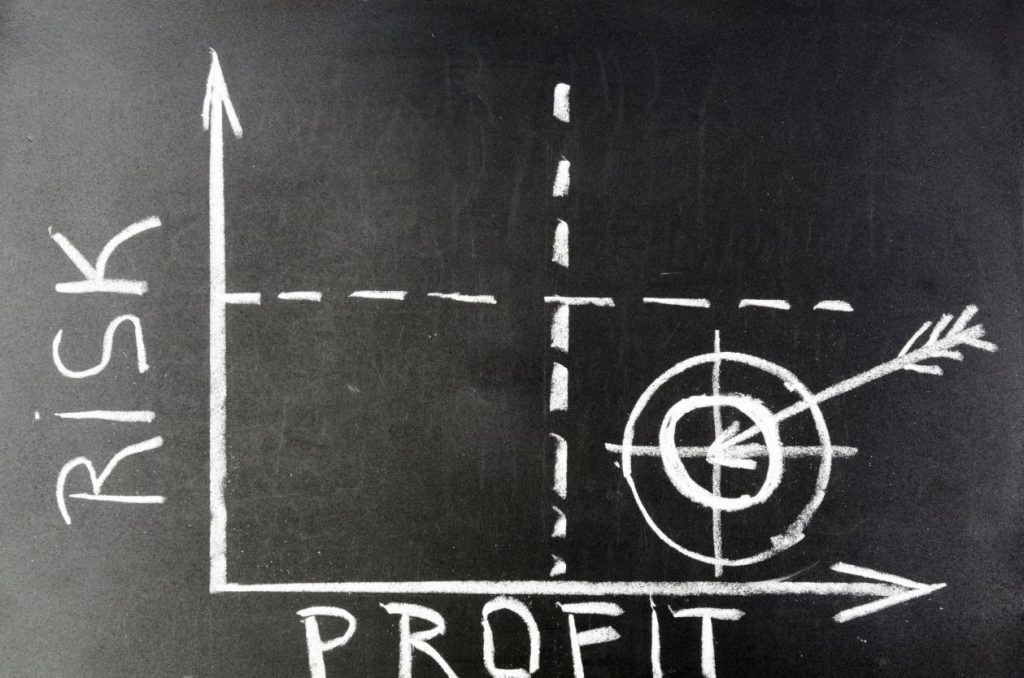
Going back to our previous examples, what is a lot of money going to do for you? In the beginning, you’re learning the fundamentals, discovering who you are as a trader, making mistakes, and hopefully learning from them. In other words, it’s a process… and having a lot of money doesn’t give you a pass or allow you to skip that. Why anyone would think this is the case with day trading stocks is somehow puzzling.
In fact, it actually makes more sense to start off small. Most likely, you will make more mistakes early in your trading career than later. Better to make small mistakes than expensive ones. For those saving, to get X amount to start trading… stop putting it off. Again, why wait? You might find out trading is not for you and realize that you just wasted time.
You must first learn the process of trading, finding penny stocks, and discover which strategies are suitable for your personality type. In addition, you must learn the skills of position sizing and risk management. For the most part, this will require you collecting data from your trades and analyzing that. That requires screen time, it doesn’t matter if you are risking $100 or $10,000 on a trade.
Ultimately, if you stick with it, learn and develop an edge… a time will come when you want to scale up your trading operation. Until then, start off small and begin the journey. Don’t focus on getting rich…focus on learning the process first. And don’t limit yourself to otc stocks, explore large cap stocks, too.
Imagine, leaving your day job to play the piano for a world-class orchestra without having any experience. Sounds silly right? Well, take that concept and apply it to trading. There is a learning curve involved in trading, the idea that you can leave your job to trade is really unrealistic. Well, initially it is. If you get to a point where you develop a strategy that has edge, and you’ve built up a solid track record…then yes, it’s possible to trade full time. However, you just need to get your feet wet in the beginning. That’s why you shouldn’t overly concern yourself with how much money do you need to get started — that’s the key to excelling at penny stock trading.
